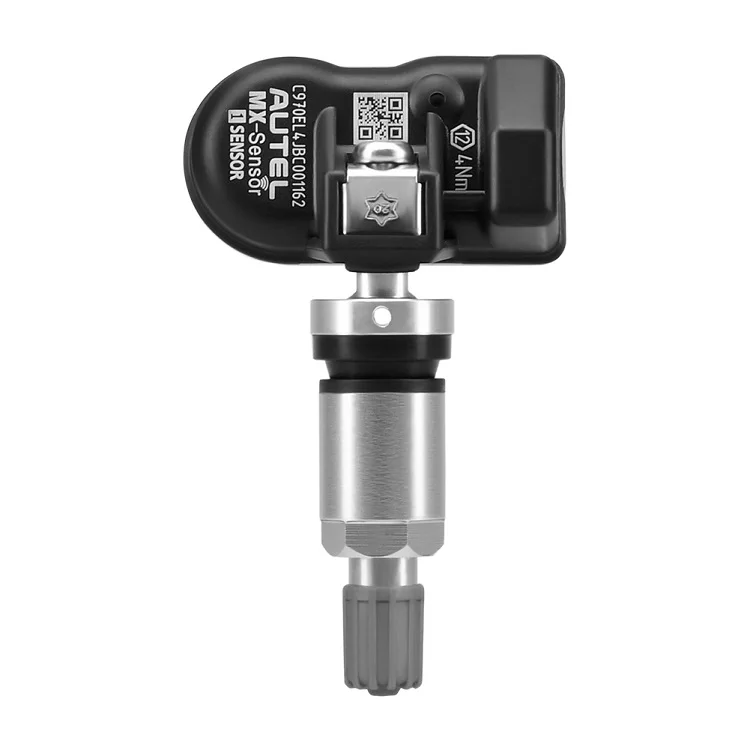Tire pressure sensor guide highlights:
Many drivers worry about big maintenance tasks, but the ‘little’ things are often the most annoying. And sometimes, as I learned after a disastrous spark plug change, they’re the easiest to screw up. Compared to that, dealing with tire sensor problems seems like a cakewalk. However, if you’re dealing with an illuminated TPMS light, know that it’s not as simple as it looks.
Tire pressure sensors aren’t universal2013 Fiat 500 Abarth valve stem type tire pressure sensors | Matthew Skwarczek, MotorBiscuitIf you want to see how inflated or deflated your car’s tires are, you use a tire pressure gauge. Your car’s tire pressure monitoring system (TPMS) has gauges, too, in the form of tire pressure sensors. And thanks to the TREAD Act, if your car is a 2008-or-later model, it has these sensors. But which kind often changes across models and brands.
TPMS tech falls into two categories: direct and indirect. Indirect systems use ABS sensors to measure wheel rotation. If these sensors find one tire is spinning faster than expected, that means it’s under-inflated, which triggers the familiar warning light. In contrast, direct systems rely on individual sensors attached to each wheel. These directly measure the air pressure in a tire and relay that information wirelessly via radio signals to a central module. And if a sensor sees the tire pressure is under the recommended level by 25% or more, it triggers the warning light.
Because these systems are so different, it stands to reason that you can’t replace direct tire pressure sensors with indirect ones or vice versa. However, you also can’t necessarily swap direct sensors between cars.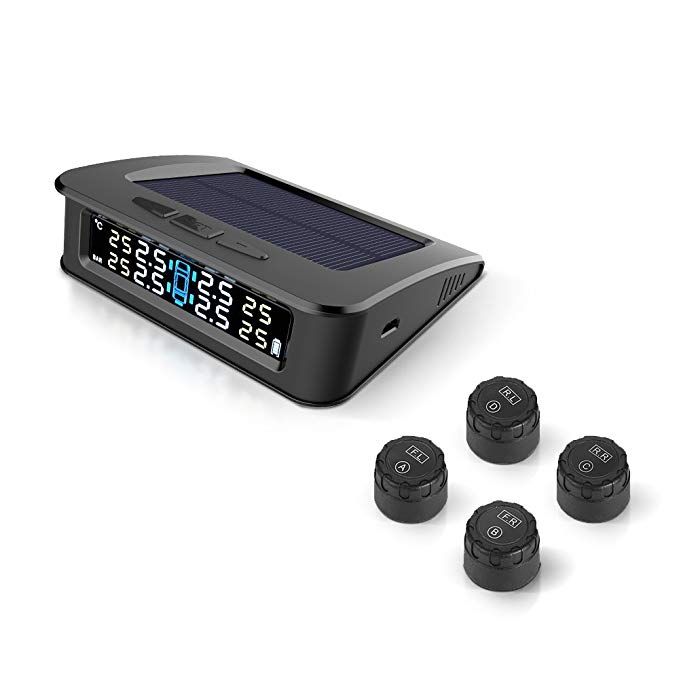 And that’s because there are two direct sensor types, NAPA explains.
And that’s because there are two direct sensor types, NAPA explains.
Some direct tire pressure sensors are the ‘valve stem type.’ As in, they’re basically sensors with valve stems attached. Meanwhile, ‘banded type’ sensors are, well, bands mounted to the wheel 180° across from the valve stems. And again, valve stem sensors aren’t interchangeable with banded ones.
Make sure you have compatible wheelsRELATED: The Pros and Cons of Filling Your Car’s Tires With Nitrogen
Normally, drivers only deal with tire pressure sensors if they or the whole TPMS has a problem.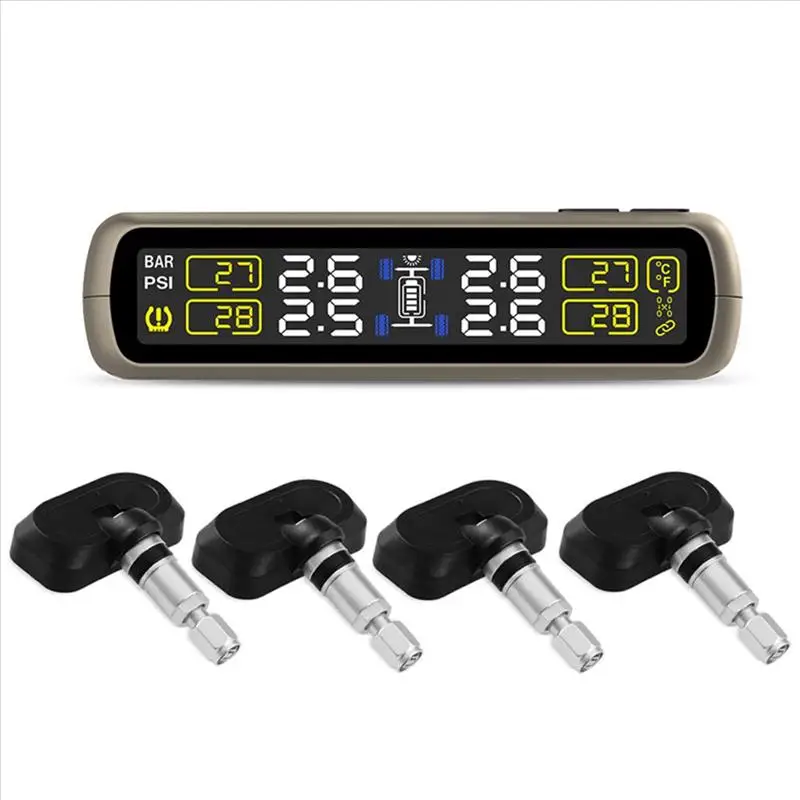 Usually, that means a blinking warning light and/or an error message. However, they also become an issue if, like me, you have separate wheel-and-tire sets for winter and summer.
Usually, that means a blinking warning light and/or an error message. However, they also become an issue if, like me, you have separate wheel-and-tire sets for winter and summer.
Yes, you can always have one set of wheels and repeatedly swap tires as the weather demands. But removing and installing tires is tough without a dedicated machine. And rather than paying someone multiple times to put the tires on, you only need to pay them once. Well, twice: once in the winter and once in the summer/spring. So, having separate wheels for separate seasons saves time and money.
But if your car has TPMS, you also need a second set of tire pressure sensors. Otherwise, the warning light would stay on all winter. Then you wouldn’t know without checking if your tires are low on air.
Yet there’s another complication here. Technically, aftermarket suppliers aren’t obligated to follow that TREAD Act I mentioned earlier. As a result, not all aftermarket wheels are TPMS-compatible. Admittedly, per the TREAD Act, tire shops are legally obligated to not use aftermarket parts if they would disable the TPMS.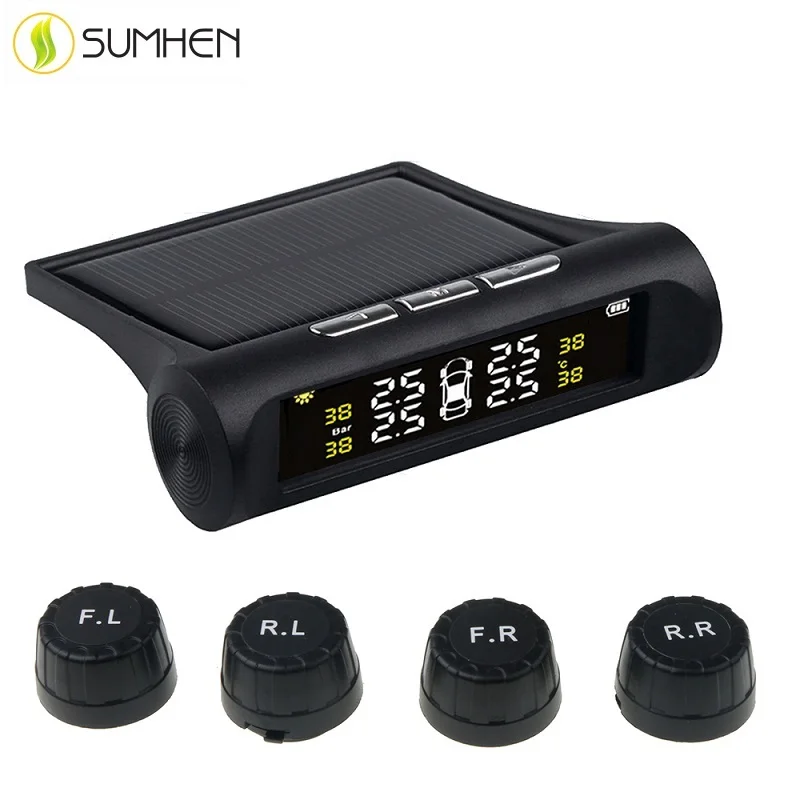 But that still doesn’t guarantee that your fancy wheels won’t throw warning lights without additional modifications.
But that still doesn’t guarantee that your fancy wheels won’t throw warning lights without additional modifications.
Measure up. #ArtOfThePart #TPMS #ACDelco #Gmparts pic.twitter.com/7P4lrJWNj9
— GM Genuine Parts & ACDelco (@GMParts_ACDelco) December 31, 2020
RELATED: 5 Myths About Tire Safety That Every Driver Should Be Aware Of
That statement flashed into my head when my Fiat 500 Abarth’s TPMS warning light went on after I switched to my summer wheels. But then I remembered I had compatible wheels. At which point, I started thinking about my tire pressure sensors. I’d bought them new from a Stellantis dealership after triple-checking the compatibility, so I thought they’d be good.
As it turns out, they weren’t. When I went to a Fiat dealership to diagnose the problem, it turned out that Stellantis offered two kinds of sensors for my Abarth.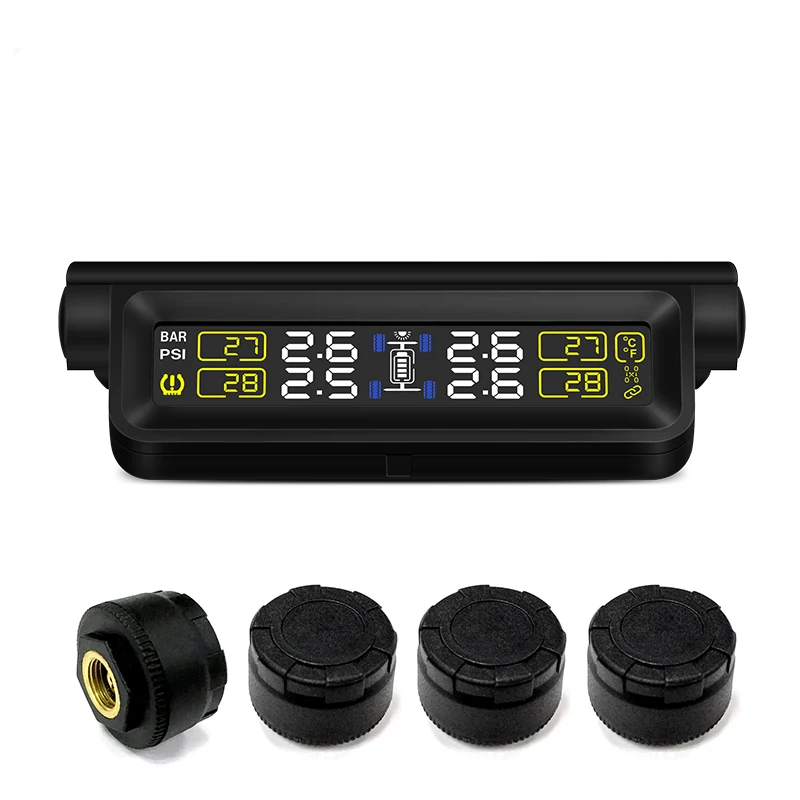 One was a so-called ‘value line’ option, while the other was a twice-as-expensive OEM version with a different part number. And after installing the pricier sensors, the light went away.
One was a so-called ‘value line’ option, while the other was a twice-as-expensive OEM version with a different part number. And after installing the pricier sensors, the light went away.
So, is the lesson here not to buy cheap tire pressure sensors? Well, yes and no. True, cheap parts cost less for a reason. But in this case, the price wasn’t necessarily the culprit. As it turns out, although TPMS sensors communicate via radio frequencies, they don’t operate on the same frequency. It’s possible my Abarth’s module simply couldn’t pick up what the cheaper sensors were sending out. And since it couldn’t ‘hear’ the sensors, it assumed there was a fault and threw up that light.
Alternatively, it could be that my Abarth’s TPMS is a high-line system and the value sensors were for a low-line one. High-line systems are more expensive but let cars display pressures for individual tires, Edmunds explains. Also, their sensors only transmit information when the car prompts them.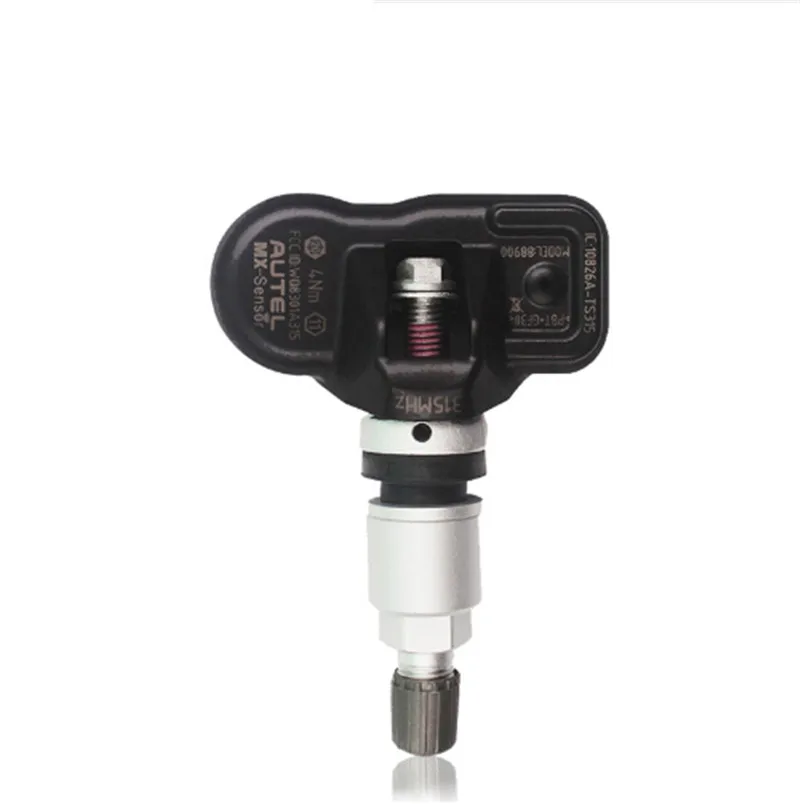 Low-line systems, on the other hand, have their sensors transmit at random intervals. They’re cheaper, but they can’t display individual tire pressures. And without careful programming, these sensors can crosstalk.
Low-line systems, on the other hand, have their sensors transmit at random intervals. They’re cheaper, but they can’t display individual tire pressures. And without careful programming, these sensors can crosstalk.
Regardless, it wasn’t the most expensive goof-up I’ve ever done, but it’s still not fun paying twice for the same part. And even a set of four cheap sensors often costs at least $100, not including installation costs. Learn from my mistakes and save some cash.
Dead batteries aren’t the only things that cause sensor faultsA Lexus dial with an illuminated TPMS light | Patrick Whittemore/MediaNews Group/Boston Herald via Getty ImagesRELATED: Will Properly Inflating Your Tires Actually Improve Gas Mileage?
There’s a simpler explanation for my TPMS woes: the tire pressure sensors were dead. Considering I bought them brand new from a Stellantis dealership, I highly doubt that all four would be faulty. But that doesn’t mean sensors can’t go bad over time.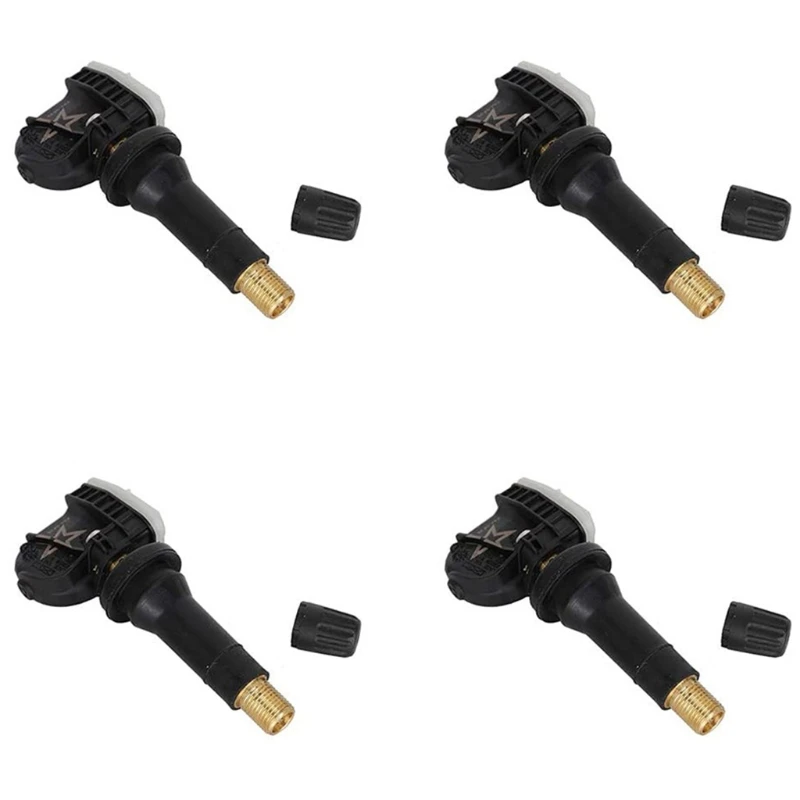
With direct tire pressure sensors, faults are often caused by dead batteries. The batteries typically last a few years, but they’re not replaceable. When one dies, the entire sensor gets replaced.
But other things can cause sensor faults. Extreme cold and heat as well as repeated pothole trauma can damage both kinds of direct sensors. Valve stem types are also susceptible to valve-stem corrosion. Hence why you should always keep the caps on. Furthermore, tire sealants can damage sensors if they’re exposed for an extended period. So, if you use it to temporarily fix a leak, make sure you clean your sensors afterward.
Will replacing the sensors reset your TPMS light?RELATED: Do All Cars Use the Same Type of Oil Filter?
If your tire pressure warning light comes on, don’t immediately start sensor shopping. First, make sure that your tires are properly inflated. Then, go for a short drive to let the TPMS reset. Only if that doesn’t do the trick should you start eyeing the sensors as culprits.
Whether you’re replacing old sensors or putting new ones on your second set of wheels, you need to reset your car’s TPMS. If a mechanic is doing the work, they have a special tool for the job. But most cars’ systems automatically reset after you drive a few miles above a minimum speed.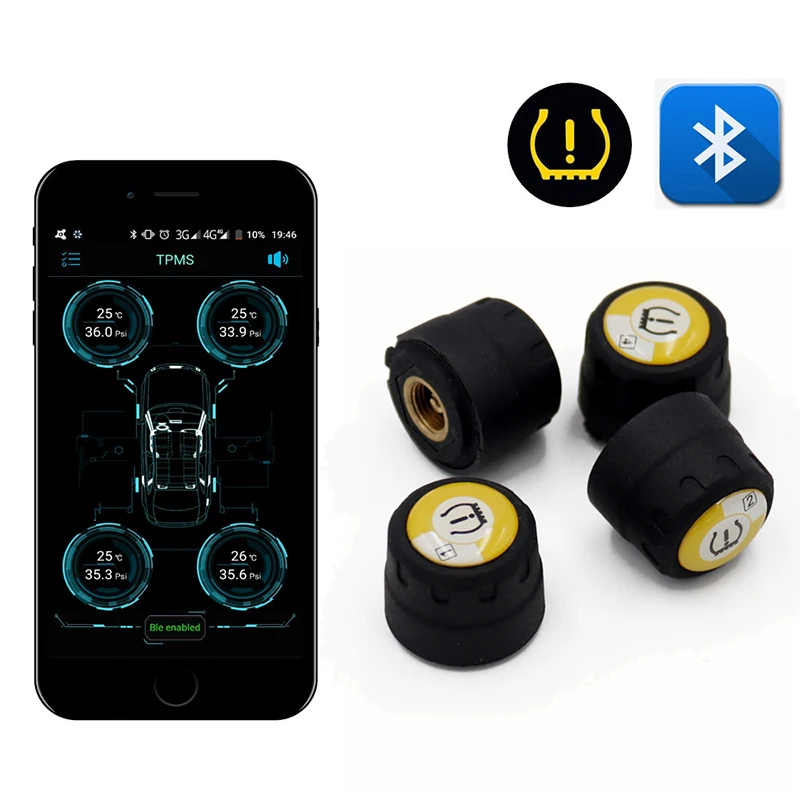 If yours doesn’t after installing new sensors, you might have bigger problems, like a malfunctioning receiver module.
If yours doesn’t after installing new sensors, you might have bigger problems, like a malfunctioning receiver module.
As I said, tire pressure sensor replacement isn’t as straightforward as it looks. But if you pay attention to what your car needs, it’s not something you have to worry about. And hey, even if it breaks, checking your own tire pressure isn’t that big of a hassle.
Follow more updates from MotorBiscuit on our Facebook page.
RELATED: Here’s Why Tire Pressure Fluctuates In Winter
Universal TPMS sensors are designed to replace the original equipment (OE) sensors for the automotive aftermarket. There are different types of universal sensors and Bartec tools are designed to work with all major types. The two major types are ‘programmable’ and ‘configurable’.
Programmable sensors such as the EZ-sensor® (Schrader) and the Sens.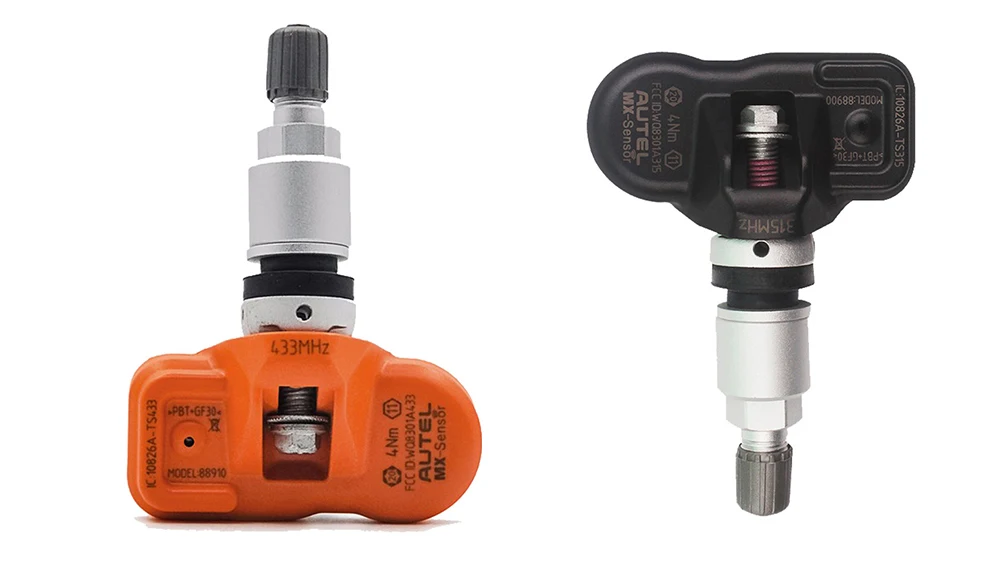 it™ (Alligator) are programmed by a Bartec tool, such as the TECH600. For example, if a broken sensor is to be replaced, then the tool would clone the ID and communication protocol of that sensor onto the programmable sensor, so that the car sees no difference when the new sensor is fitted. This is the key to turning out the TPMS warning light on the dashboard.
it™ (Alligator) are programmed by a Bartec tool, such as the TECH600. For example, if a broken sensor is to be replaced, then the tool would clone the ID and communication protocol of that sensor onto the programmable sensor, so that the car sees no difference when the new sensor is fitted. This is the key to turning out the TPMS warning light on the dashboard.
Configurable TPMS Sensors such as the Huf IntelliSens, however, have protocols and parameters already stored in the sensor which only need to be activated by the Bartec tool to make the sensor compatible with the vehicle.
The RITE-SENSOR® from Bartec is a fully configurable and programmable universal sensor. Complete with an aluminium Clamp-in and black Snap-on valve stems, and work with all Bartec TPMS tools. Designed to replace faulty sensors, without the extra costs of having to buy expensive OE sensors. Ability to cover a high percentage of vehicles with Direct TPMS systems.
Complete with an aluminium Clamp-in and black Snap-on valve stems, and work with all Bartec TPMS tools. Designed to replace faulty sensors, without the extra costs of having to buy expensive OE sensors. Ability to cover a high percentage of vehicles with Direct TPMS systems.
EZ-sensor® is the first truly programmable and patented Tyre Pressure Monitoring Sensor which has been designed with the goal of replacing 90% of the TPMS sensors currently stocked by the dealer. Sensors are based on the Schrader Snap In or Clamp In design.
Sensors are based on the Schrader Snap In or Clamp In design.
The Huf IntelliSens™ universal sensor is pre-programmed with the protocols of numerous tire pressure sensors belonging to different models of automobile.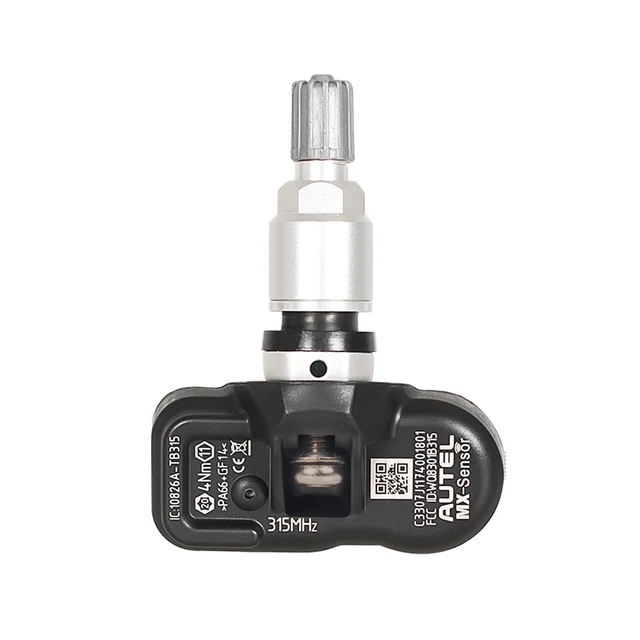 When you fit it, you use a diagnostic device to configure it in seconds. This allows vehicles to pass more quickly through your workshop and saves your customers long waits.
When you fit it, you use a diagnostic device to configure it in seconds. This allows vehicles to pass more quickly through your workshop and saves your customers long waits.
Sens.it™ a fully configurable replacement sensor from Alligator. Requires a TPMS tool to set the protocol ID based on Make, Model and Year selection.
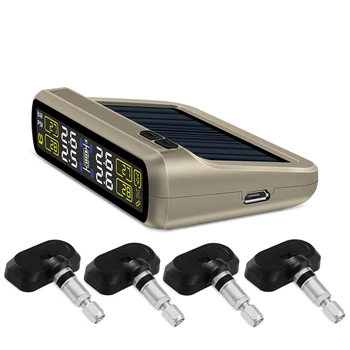
Type | How they work | Tool Required to Diagnose Fault on Vehicle | Tool Required | Tool Required | Examples | Works with |
|---|---|---|---|---|---|---|
Universal Sensors | Sensor ID and Protocol are programmed into sensor via LF | YES | YES | YES - if new ID | EZ-sensor® | YES |
Multiple sensor protocols and ID formats already present in sensor | YES | NO | YES | IntelliSens™ | YES |
A tyre-pressure sensor is a small programmable electronic device, located in the pressurised pocket made by a wheel and tyre, that constantly measures the air pressure inside the tyre. Tyre-pressure sensors are integral to what is known as the Tyre Pressure Monitoring System.
Universal Sensors are Non-Original Equipment (OE) TPMS sensors used in the replacement market.
Programmable sensors must be programmed by a TPMS Tool to the specification of the vehicle they are being installed on. Once programmed most programmable sensors provide the same information that the OE sensors did.
In most cases you won’t unless the warning indicator is coming on flashing for 60 to 90 seconds intermittently, but it would still require having codes read from the system and sensor tested.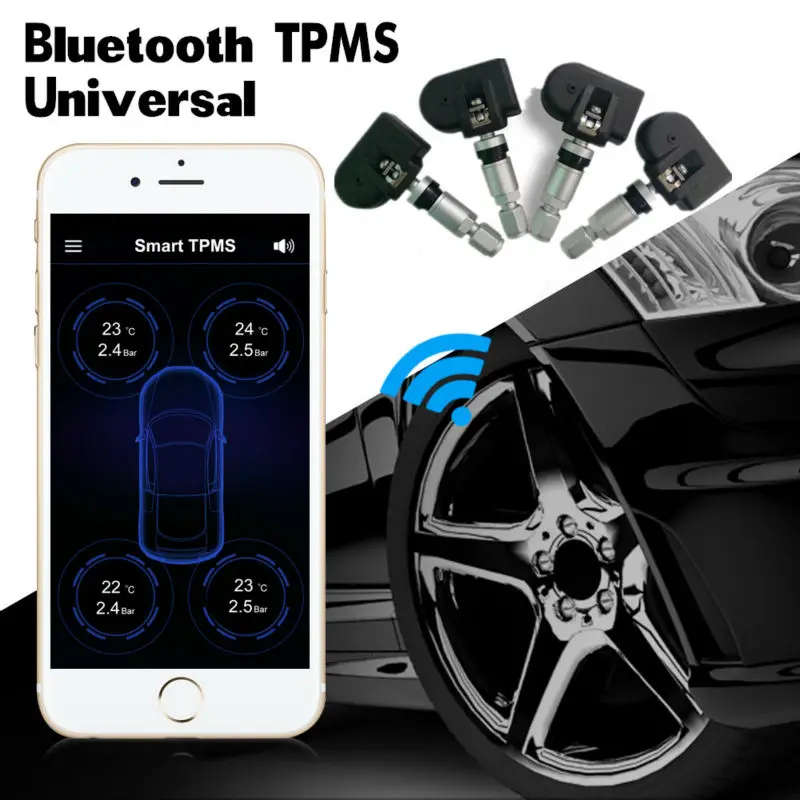 Best to take the vehicle into an authorised service center for testing.
Best to take the vehicle into an authorised service center for testing.
Your local tyre shop or repair shop can replace the TPMS sensors based on the life expectancy of your new tyres, or if your sensor is faulty.
Most tyre shops and repair shops recommend servicing the TPMS when changing or installing new tyres or wheels by replacing the valve core, retaining nut, seal and cap on the valve stem, then testing the system to make sure it's operating correctly. Many direct systems can display the actual pressure in each tyre.
Bartec recommends having the sensors relearned after a tyre rotation and is required after a tyre/s replacement. This way the TPM System knows the accurate location of each sensor/wheel.
Tyre Pressure Monitoring Systems, or TPMS provide safety and economic benefits for motorists. By helping drivers to maintain the correct tyre inflation, TPMS can help improve ride and handling, reduce stopping distances and the potential for hydroplaning.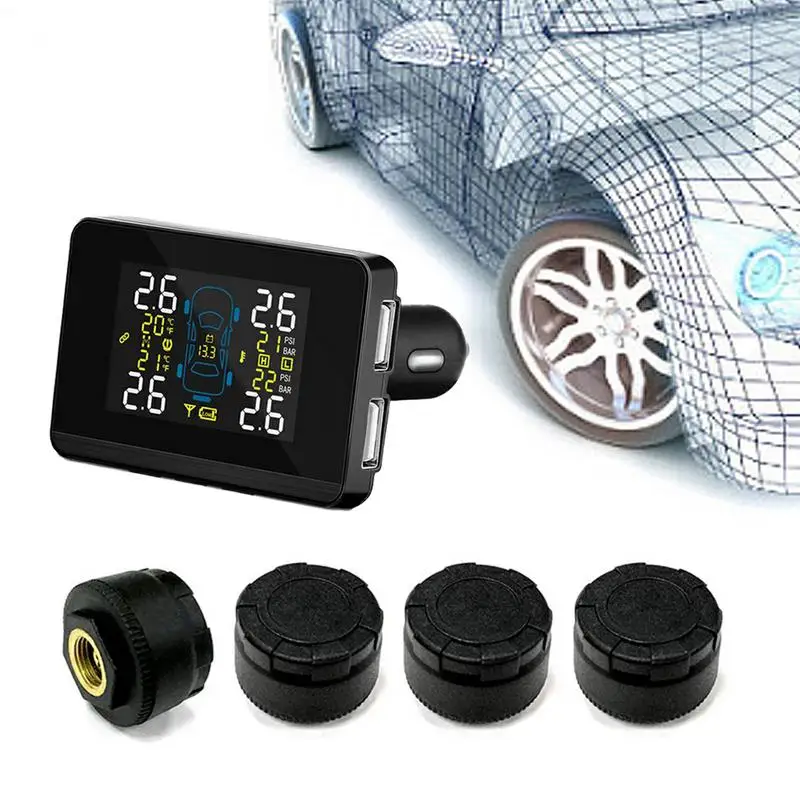 TPMS can also increase fuel efficiency and extend tyre life. TPMS is designed to monitor the air pressure in a tyre and send a warning to the vehicle’s on-board monitoring system when the pressure drops below a preset limit.
TPMS can also increase fuel efficiency and extend tyre life. TPMS is designed to monitor the air pressure in a tyre and send a warning to the vehicle’s on-board monitoring system when the pressure drops below a preset limit.
You cannot always tell if a tyre is under inflated simply by looking at it. The only way to accurately check tyre pressure is by using a quality tyre pressure gauge. A tyre can lose air pressure without appearing to be under inflated. There is very little visual difference between a properly inflated and an under inflated tyre.
The life of a TPMS sensor will vary due to several variables including temperature (cold can reduce the life as well as extreme moisture), garage kept or not, driving distance, maintenance of the TPMS sensor and air pressure. Normally you can expect to get somewhere from 7 years up to 12 years before failure occurs under typical driving conditions.
You should stop as soon as it is safe and practical to inspect and make sure you don’t have a tyre rapidly losing pressure.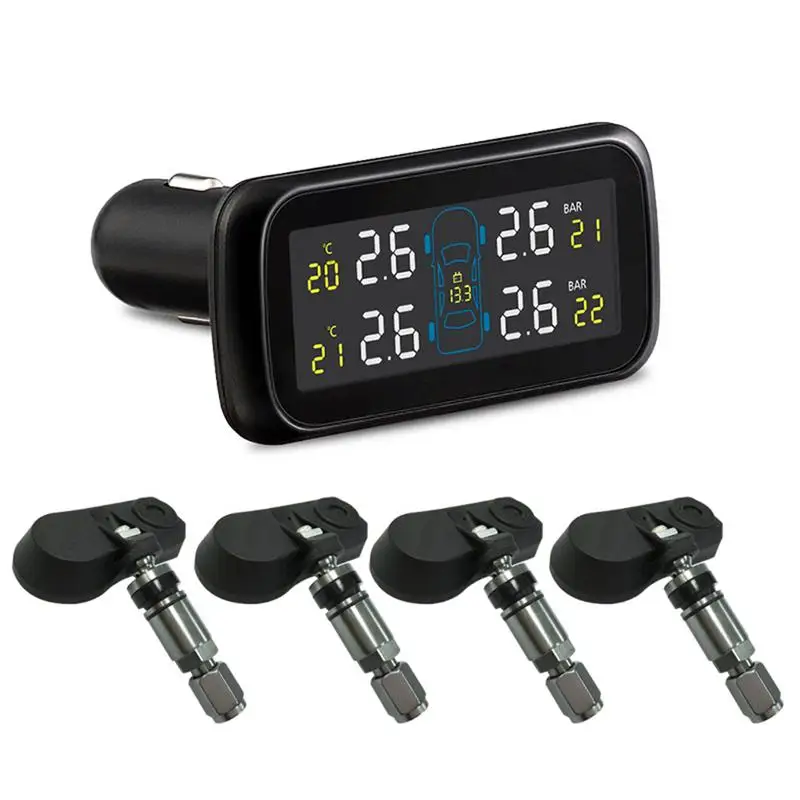 Driving with an extremely low tyre pressure can cause an accident and/or ruin the tyre. If the tyres look to be holding pressure, find a tyre repair shop that can check your air pressure when it is possible.
Driving with an extremely low tyre pressure can cause an accident and/or ruin the tyre. If the tyres look to be holding pressure, find a tyre repair shop that can check your air pressure when it is possible.
No. The battery in the sensor cannot be replaced. The housing is sealed to protect the internal components including the battery in the harsh environment inside the tyre.
As of model year 2014, all vehicles in Europe require the installation of a Tyre Pressure Monitoring System to all new passenger cars.
A flashing TPMS warning light (looks like a horseshoe) or the letters TPMS being lit, indicate a TPMS system failure. This means that the system is not working properly and needs to be diagnosed by a reputable repair facility. It could be a bad sensor/s or other component in the system or failure to properly relearn the IDs for the sensors to the vehicle.
Every TPMS sensor has a unique ID number so the vehicle’s on-board computer system can identify the location of that ID and wheel.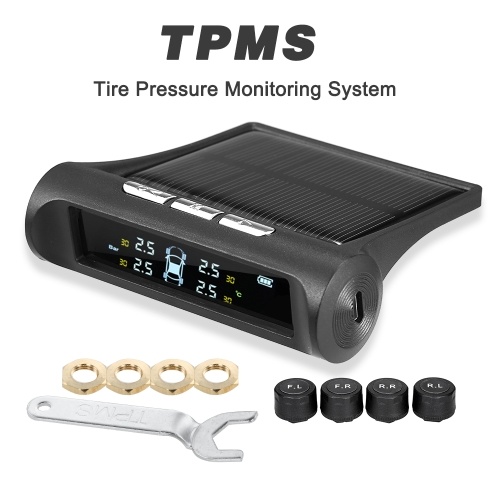 The ID numbers are written via a Relearn procedure into the on-board computer system. The tyre technician is able to identify through testing, the location of a bad sensor/s to show the correct air pressure by location. Most relearns require a capable and compatible TPMS tool.
The ID numbers are written via a Relearn procedure into the on-board computer system. The tyre technician is able to identify through testing, the location of a bad sensor/s to show the correct air pressure by location. Most relearns require a capable and compatible TPMS tool.
When Rotating wheels and tyres or replacing tyres, the TPMS sensors get moved to another location on the vehicle. The tyre technicians must perform a function known as a Vehicle Relearn. The technician will use a piece of equipment like a scan tool or a TPMS tool to perform this task. This task requires training, proper equipment and takes time, therefore many tyre retailers and repair shops charge for the service.
Low tyre pressure is one of the leading causes of blowouts causing an accident involving death/injury, excessive tyre wear, poor handling, diminished fuel economy, reduced effectiveness of the vehicle stability control system. When the TPMS warning light is on when presented for an MOT it is an instant failure of the vehicles MOT.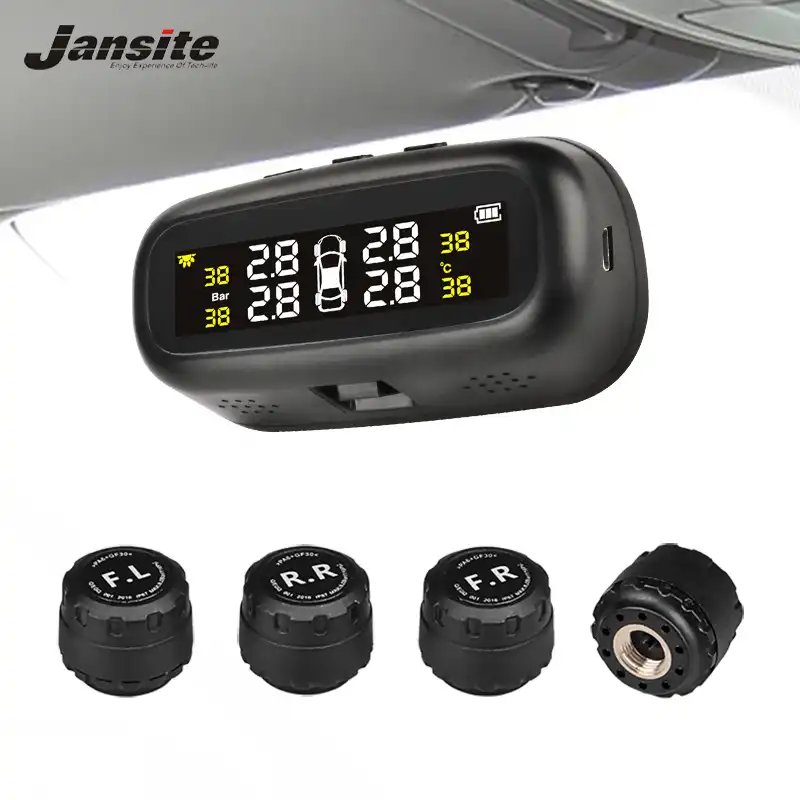
Typically, this indicates tyre/s that have a low-pressure condition of at least 25% below the pressure listed on the placard on the driver’s door.
from 2250₽
from 3200₽
Our company is specialized in tire pressure sensors . You can purchase TPMS sensors from us for any car.
Both original and universal analogues of sensors are available, which with 99% probability will fit your car and will work as well as an original spare part.
In our store, the cost of tire pressure sensors is much cheaper than original TPMS kits.
Sensor Catalog
+7 (495) 790-11-24
Most modern cars have built-in TPMS sensors, but there are some that don't. If your vehicle does not have a built-in tire pressure monitoring system (TPMS) sensor, you have nothing to worry about. It is still possible to buy a TPMS sensor to keep your car's tires from being compromised while driving. These are systems that are designed to detect low tire pressure in your vehicle and alert you immediately. Thus, they guarantee your safety on the roads.
It is still possible to buy a TPMS sensor to keep your car's tires from being compromised while driving. These are systems that are designed to detect low tire pressure in your vehicle and alert you immediately. Thus, they guarantee your safety on the roads.
Not only will you save your life, but you will also save on towing and repair costs. Finding a quality TPMS sensor can be a daunting task, especially if you are buying one for the first time. You need to make sure you choose one that is compatible with your vehicle's wheels and ECU. In this article, we have reviewed 8 of the best TPMS sensors available on the market. Here's a quick guide before continuing.
Manufacturer: Autel
We start this review with the Autel TPMS sensor, which comes in a set of four. It will work just as well as the OEM and it's possible at a minimal cost.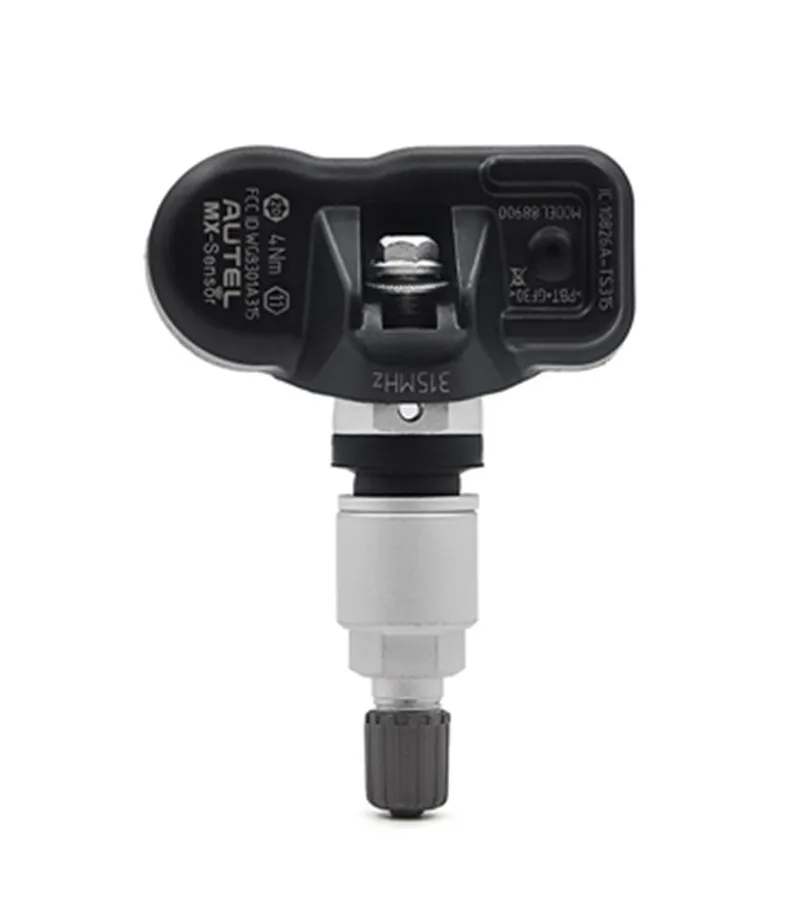 In addition to the affordable price, it is very easy to use. It also promises to last a long time, which means you'll save on frequent repairs to your car.
In addition to the affordable price, it is very easy to use. It also promises to last a long time, which means you'll save on frequent repairs to your car.
Programming and setting up the device is another thing you will appreciate about this device. It is powered by a battery with a 5 year lifespan. You also need to have enough confidence to buy as the manufacturer offers a 2 year warranty. The price of this essential is relatively high, but you will definitely get value for money.
Sensor Features:
- This is a system that is very easy to install and program.
- Comes with a 2 year manufacturer's warranty.
- Rugged and durable construction with 5 years battery life.
- This is an economical and easy to use system for cars.
Launch
Tire Pressure SensorsManufacturer: Launch
This is a set of four sensors designed to monitor your vehicle's tires.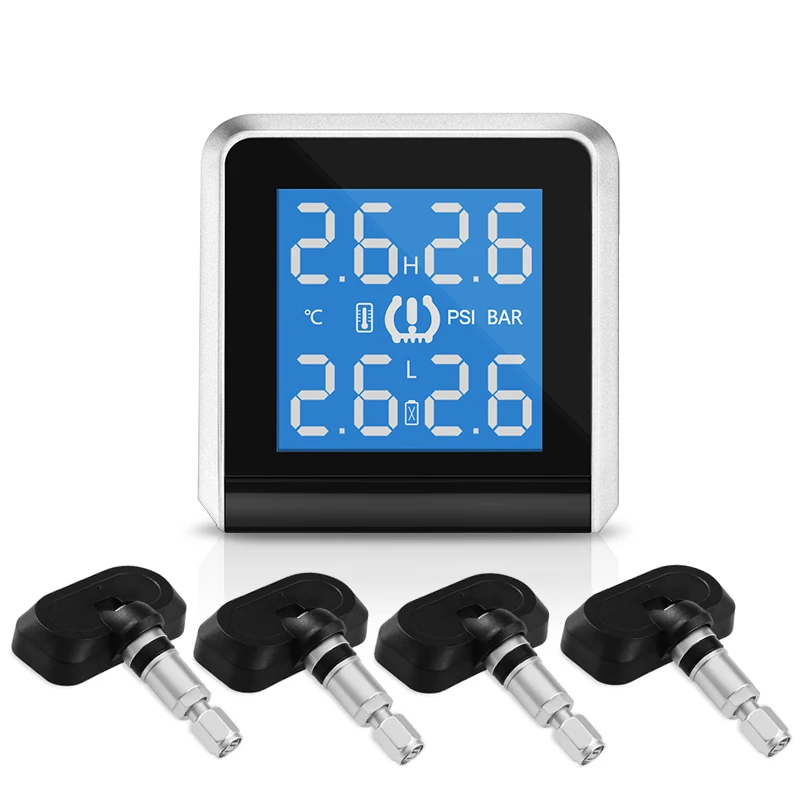 The device comes pre-programmed, don't forget that its installation is very simple. The battery of this device is of good quality, it will last for 6 years. In addition to monitoring car tire inflation, the sensor also sends temperature information like factory sensors.
The device comes pre-programmed, don't forget that its installation is very simple. The battery of this device is of good quality, it will last for 6 years. In addition to monitoring car tire inflation, the sensor also sends temperature information like factory sensors.
This is a device that works so well that it doesn't take long to install. It is also pre-programmed which means it will be ready to use right out of the box. The manufacturer provides a 2-year warranty on this product to cover any manufacturing defects. Again, there is a money back guarantee in case of dissatisfaction.
Sensor Features:
– Battery life 5 to 6 years.
- Easy installation and reset of iDrive.
- 80% customer satisfaction guarantee.
- TPMS comes with a 2 year warranty.
Manufacturer: ORO-Tek
This sensor works the same as the original equipment sensor. You will never have to worry about your limited budget as this one comes at a very affordable price. Another unique feature of this sensor is that it does not require programming. What you will need to do is use the OEM relearn procedure.
You will never have to worry about your limited budget as this one comes at a very affordable price. Another unique feature of this sensor is that it does not require programming. What you will need to do is use the OEM relearn procedure.
Its two-piece stem design makes maintenance easy. This is because it becomes very easy to replace the stem regardless of the electronics. Four sensors are required for best performance. Oro-Tek is a brand that offers unparalleled products and the educational resources you need to deliver a high level of customer satisfaction.
Sensor Features:
- Designed to match the original equipment sensor.
- This TPMS sensor does not require programming.
- 35 degree adjustable stem.
- Uses the OEM relearn option.
Manufacturer: Schrader
On average, there are 59 million vehicles equipped with TPMS sensors in Russia.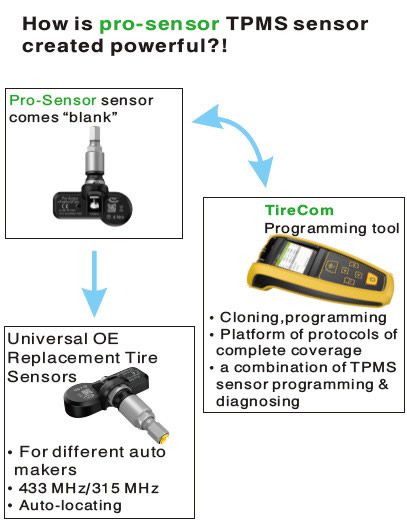 Approximately 19 million vehicles enter the market every year, increasing the demand for these sensors. You need to purchase a sensor that does not use dead batteries or electronics as these can compromise your safety. To this end, Schrader offers direct mount TPMS sensors.
Approximately 19 million vehicles enter the market every year, increasing the demand for these sensors. You need to purchase a sensor that does not use dead batteries or electronics as these can compromise your safety. To this end, Schrader offers direct mount TPMS sensors.
This is a brand that has managed to integrate more than 200 million sensors into the world's automotive platforms since the launch of TPMS in 1997. You will appreciate the universal compatibility of this sensor as it is used in most car models. Since this is a sensor from a well-known brand at an affordable price, you have every reason to buy.
Sensor Features:
is the world leader in TPMS design and technology.
- Patented Schrader technology built into every OEM sensor.
- More than 200 million sensors are in operation worldwide.
- Offers a direct OEM sensor replacement.
Manufacturer: VDO
If you are looking for a sensor that will not hinder your work while still providing maximum coverage, this is a very good choice.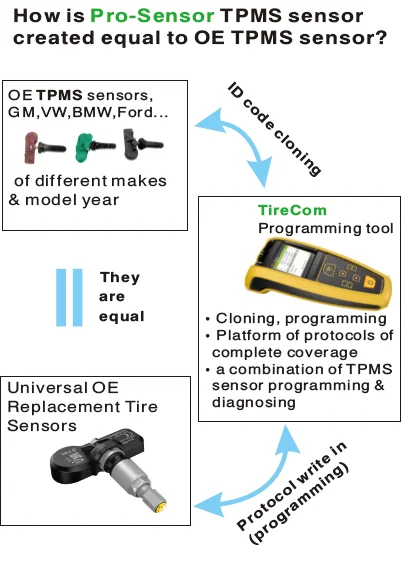 It is not only versatile, but also reliable for any trip. The gauge has a strong clamping rod that helps expand your vehicle's wheel armature. Since you are made by a famous German brand, you will have every reason to buy this system.
It is not only versatile, but also reliable for any trip. The gauge has a strong clamping rod that helps expand your vehicle's wheel armature. Since you are made by a famous German brand, you will have every reason to buy this system.
This sensor comes pre-programmed and designed to follow the re-learning procedures for all vehicles. You will also have a very easy time when it comes to installation. REDI-Sensor is going to replace many original sensors, including latching sensors. The best thing about this sensor is that it comes at a very affordable price despite its outstanding performance.
Sensor features:
- Includes all parts for easy installation.
- Robust swivel stem design with clamp.
- This sensor is approved by the original manufacturer.
- Sensor is pre-programmed to perform OE relearn procedures.
Manufacturer: VDO
In fifth place, according to our research, is another sensor from a well-known brand.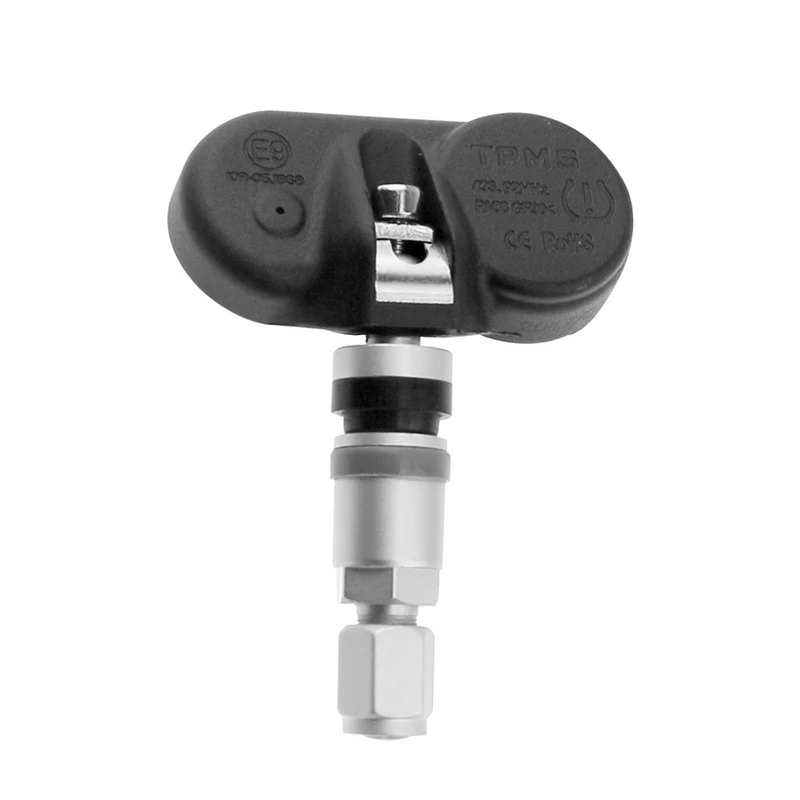 When buying, you must be sure of yourself, because this sensor has a great track record. It comes in a set of two and comes with installation instructions to ensure a hassle-free installation. You will also appreciate the fact that no programming is required for this sensor.
When buying, you must be sure of yourself, because this sensor has a great track record. It comes in a set of two and comes with installation instructions to ensure a hassle-free installation. You will also appreciate the fact that no programming is required for this sensor.
In addition to being made by well-known manufacturers, this sensor works flawlessly just like the original equipment. The price for it is relatively affordable so that everyone can afford it, regardless of their budget.
Sensor Features:
- Sensors are supplied as a set of two.
- No programming required.
- Works just like the original equipment.
- Comes with installation instructions to ensure easy installation.
Manufacturer: Denso
If you want to be sure that your safety on the road will not be compromised, this is the sensor you need. The advantage of this device is that it is ideal for most car models.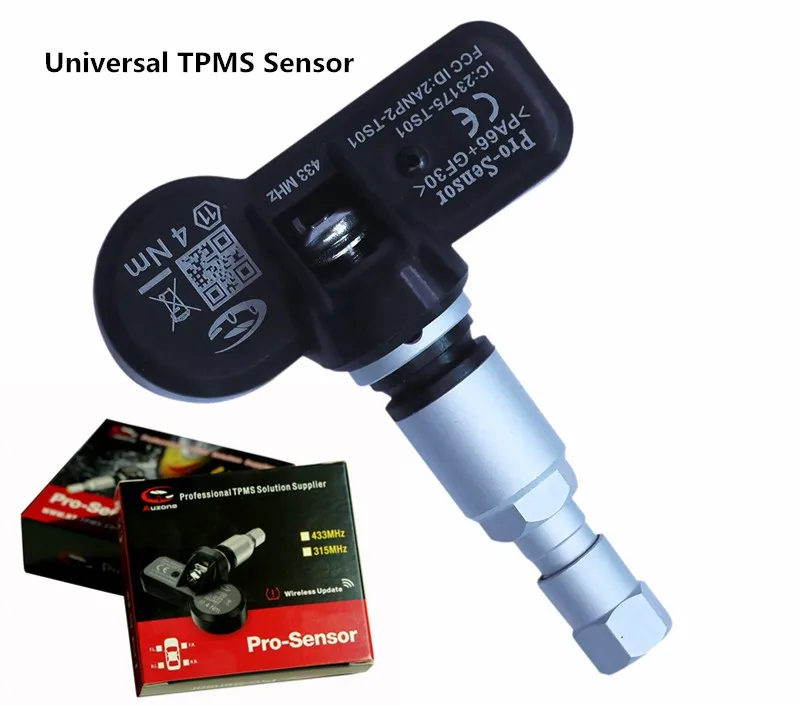 It is powered by polymer batteries that have been proven to last for a very long time. You will love installing this device in your car.
It is powered by polymer batteries that have been proven to last for a very long time. You will love installing this device in your car.
You have nothing to worry about even if you are shopping on a very limited budget. This is because this device comes at a very affordable price to ensure it fits all budgets. The fact that it comes from well-known manufacturers gives you the confidence to buy.
Sensor Features:
- Clamp Mount Design.
- Powered by a lithium polymer battery.
- This is a great OEM replacement.
- Ideal for most car models.
Manufacturer: ACDelco
Finally, we have the ACDelco TPMS sensor, which is battery operated. It will help you check your car's tire pressure and alert you when it's 25% below the recommended level. Using radio frequency, this sensor will flawlessly send pressure data to the on-board computer in the vehicle.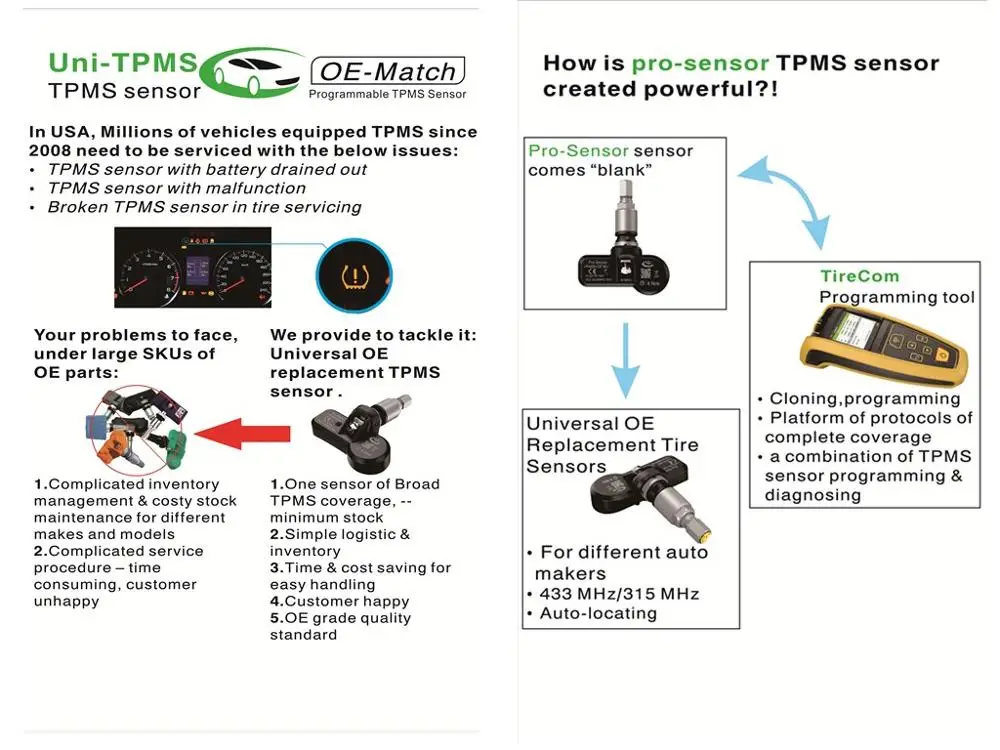 The battery is good because it will last you up to 8 years.
The battery is good because it will last you up to 8 years.
However, you should know that this unit will work well for General Motors vehicles. Therefore, it is not recommended for some other manufacturers. However, this sensor works flawlessly and is easy to install as advertised. Thus, if you want to stay safe on the road with the right level of tire inflation, this is the one you should choose.
Sensor Features:
- Offers quality, reliability and durability.
- Improves vehicle safety.
- Batteries last up to ten years.
- Designed for flawless communication with the GM TPMS module.
Vladimir ">
Vladimir
Director of 80 wheel tire service in SVAO
Ask a question
- Versatility: whenever you need to buy sensors, TPMS will be which will work on a wide range of cars regardless of make or model. You will get some TPMS sensors that will not work on Japanese cars.To get good value for money, the sensor you choose should work on all car models.
You will get some TPMS sensors that will not work on Japanese cars.To get good value for money, the sensor you choose should work on all car models.
- Ease of use: As with any tool you buy, it's good to choose one sensor that is easy to use. You need to get a TPMS sensor that will serve you, not you. If you find yourself always consulting the Internet on how to use the sensor, you can be sure that this will give you difficulties.
- Reliability: It is always recommended to choose TPMS sensors from reputable brands. This ensures that you can get a timely response if you get stuck somewhere. You also need to check if the manufacturer has given a warranty for the tool you are going to purchase. This inspires confidence that the instrument is of good quality.
Maintaining ideal tire pressure is important for every driver. Failure to do so may result in tire damage, vehicle wear or even traffic accidents. Buying a TPMS sensor will save you all those worries on the road.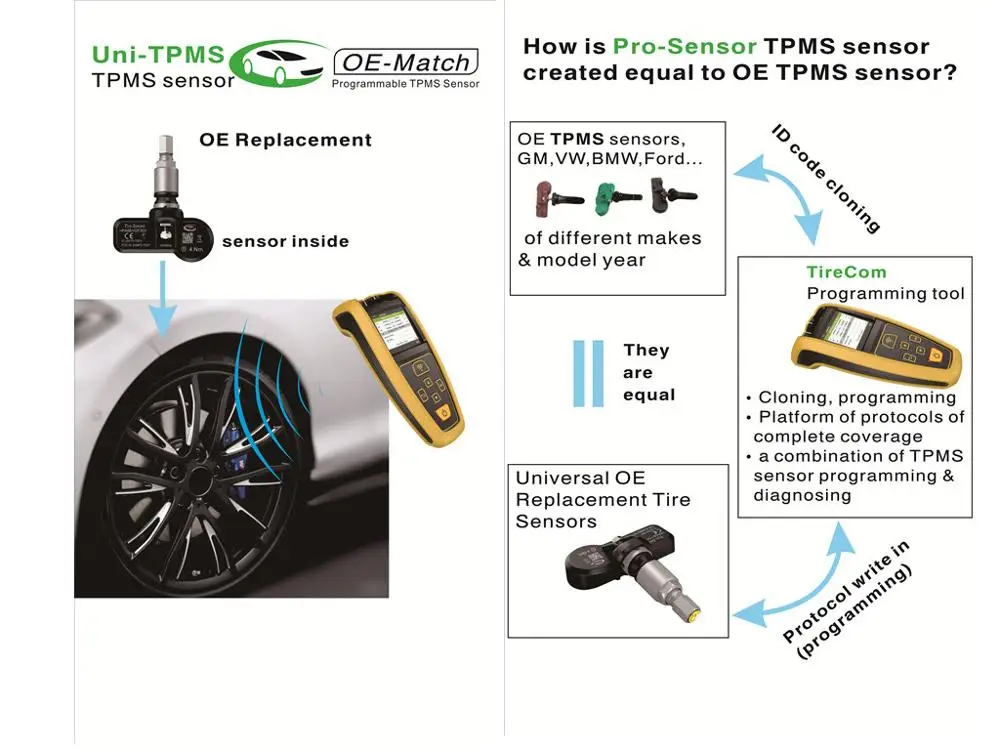 There are so many brands of TPMS sensors that it can be confusing at first. In this article, we have reviewed the 8 best TPMS sensors available today. We hope you find at least one sensor compatible with your vehicle. From the guide provided by us, you will learn which sensor to choose.
There are so many brands of TPMS sensors that it can be confusing at first. In this article, we have reviewed the 8 best TPMS sensors available today. We hope you find at least one sensor compatible with your vehicle. From the guide provided by us, you will learn which sensor to choose.
Activator of pressure sensors in TPMS EL -50448 tires for Auto GM RT
Delivery in Ukraine
1 047.07 UAH
523.53 UAH
Buying in tire control system TPMS LCD TY02-W, external sensors rt
Delivery across Ukraine
2 457.93 UAH
1 228.96 UAH
Buy
Tire pressure monitoring system TPMS LCD TY03-N, internal sensors rt
Delivery in Ukraine
3 402.39 UAH
1 701.19 UAH
Buy
Inner Tesla 433MHz tire sensor for Tesla 3, S, X (TPMS) 1074812-00-B, 1034602-00 -A RT
Delivery from Lviv
1 258 UAH
629 UAH
Buy
System control and temperature in tire tires with sensors and solar panel (7582) RT
COMPITION
2 168.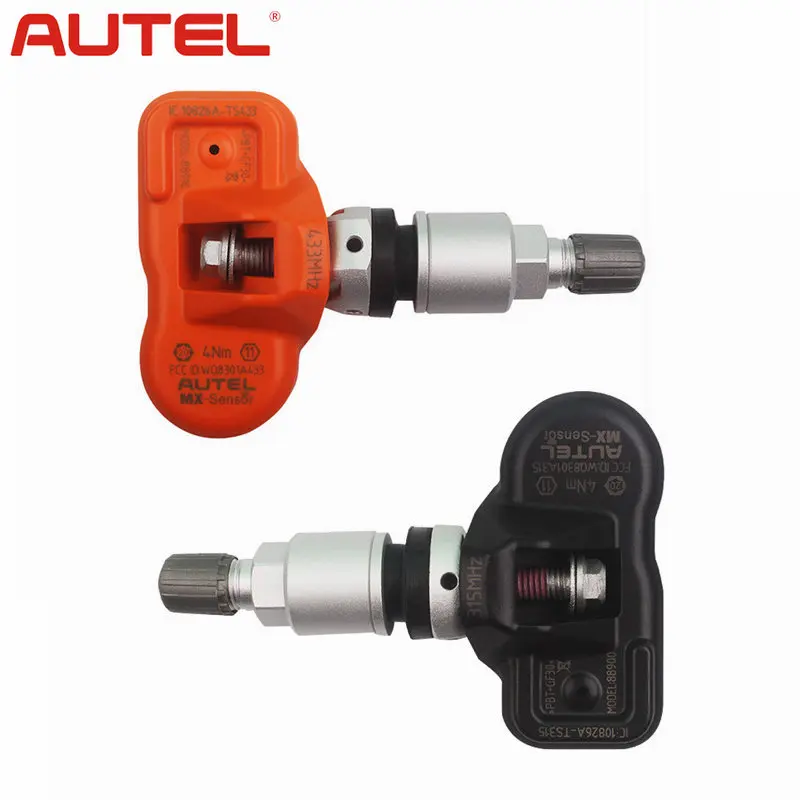 26 UAH
26 UAH
1 084.13 UAH
Buy
Activator of pressure sensors in tire tires TPMS EL-50448 for cars GM EP
Delivery in Ukraine
1 065.72 UAH
9000.86 UAHBuy
Ephir.com LCD TY02-W, external sensors ep
Delivery across Ukraine
0008
Delivery in Ukraine
3 421.04 UAH
1 710.52 UAH
Buy
Ephir.com.ua
Pressure control system TPMS TY03-N, Internal sensors PS
Delivery
9000 393.06 UAH1 696.53 UAH
Buy
Online store Pricess
Tire pressure monitoring system TPMS LCD TY02-W, external sensors ps
Delivery across Ukraine
2 448.60 UAH0002 1 224.30 UAH
Buy
Online store PRICESS
Activator of pressure sensors in tire tires TPMS EL-50448 for auto GM PS
Delivery in Ukraine
1 037.74 UAH
9000 518Internal tire pressure sensor TESLA 433MHz for Tesla 3, S, X (TPMS) 1074812-00-B, 1034602-00-A ps
Delivery from Lviv
1 253.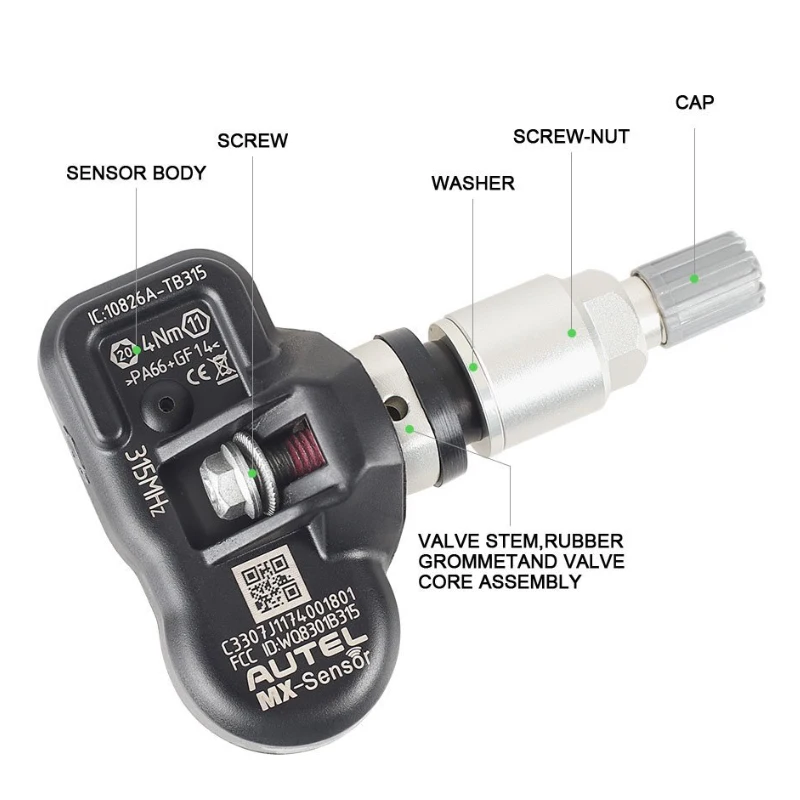 33 UAH
33 UAH
626.60 080002 Buy
online store PRICESS
System of pressure control and temperature in TPMS tires with sensors and solar panel (7582) PS
Delivery in Ukraine
2 163.59 UAH
1 081.80 UAH
Buy
,0002 online store PRECESS
Solar wireless tire pressure monitoring system with 4 sensors (TPMS)
In stock
Delivery across Ukraine
UAH 800
Buy
Foxwell T1000 Automating activation, deactivation, errors of TPMS Speakers
in a warehouse in Kharkov
Delivery in Ukraine
9000 8 700 UAH8 439 UAH
Buy Gifts and Gajes 9000
TPMS sensor programmer Autel MaxiTPMS PAD
In stock in Kyiv
Delivery across Ukraine
3 566 UAH
Buy
Online store "CARTOOLS"
Universal sensor activator TPMS ST-TP V2-Terminator
In stock in Kharkov
Delivery across Ukraine
2 107 UAH
2 002 UAH
Buy
ChinaWorld - high quality goods!Activator of TPMS EL-50448 / EL-50449
sensors in a warehouse in Kyiv
Delivery in Ukraine
1 225 UAH
Buy
Online store Cartools
TPMS Autel MX 315 /433 sensor.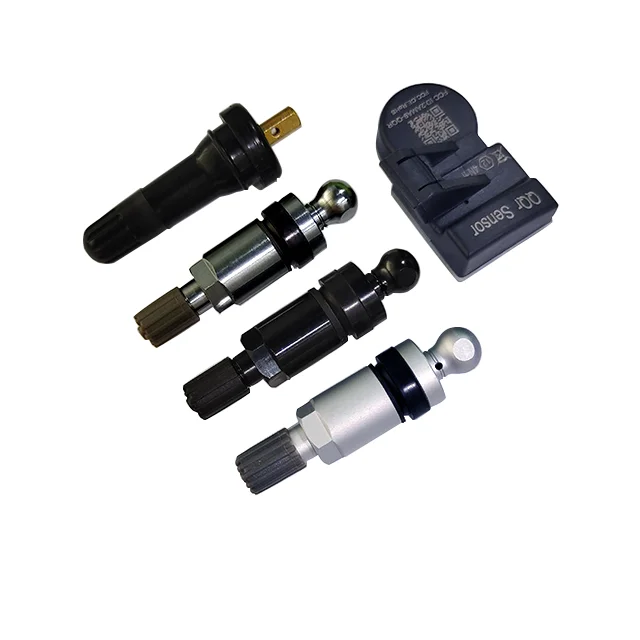 MHz (quick lock)
MHz (quick lock)
In stock in Kyiv
Delivery across Ukraine
1 449 UAH
Buy
Online store "CARTOOLS"
Tire pressure and temperature monitoring system TPMS for Android radio receivers T518A, internal sensors 9002 9008 warehouse in Kharkiv
Delivery across Ukraine
2 209 UAH
1 865 UAH
Buy
ChinaWorld - high quality goods!
TPMS Tire Pressure Monitoring System LCD TY03-N, internal sensors CT
Delivery in Ukraine
3 414.05 UAH
1 707.02 UAH
Buy
online store CARTY
TPMS control system Ty02-W, external sensors CT
Delivery in Ukraine
9000 2 469.59 GRNN1 234.79 UAH
Buy
Carty online store
Tire pressure sensor activator TPMS EL-50448 for GM CT
Delivery across Ukraine
1 UAH 958.730008
529.36 uah
Buy
Carty online store
Internal tire pressure sensor TESLA 433MHz for Tesla 3, S, X (TPMS) 1074812-00-B, 1034602-00-A CT
Delivery from
8 Lviv
1 268.